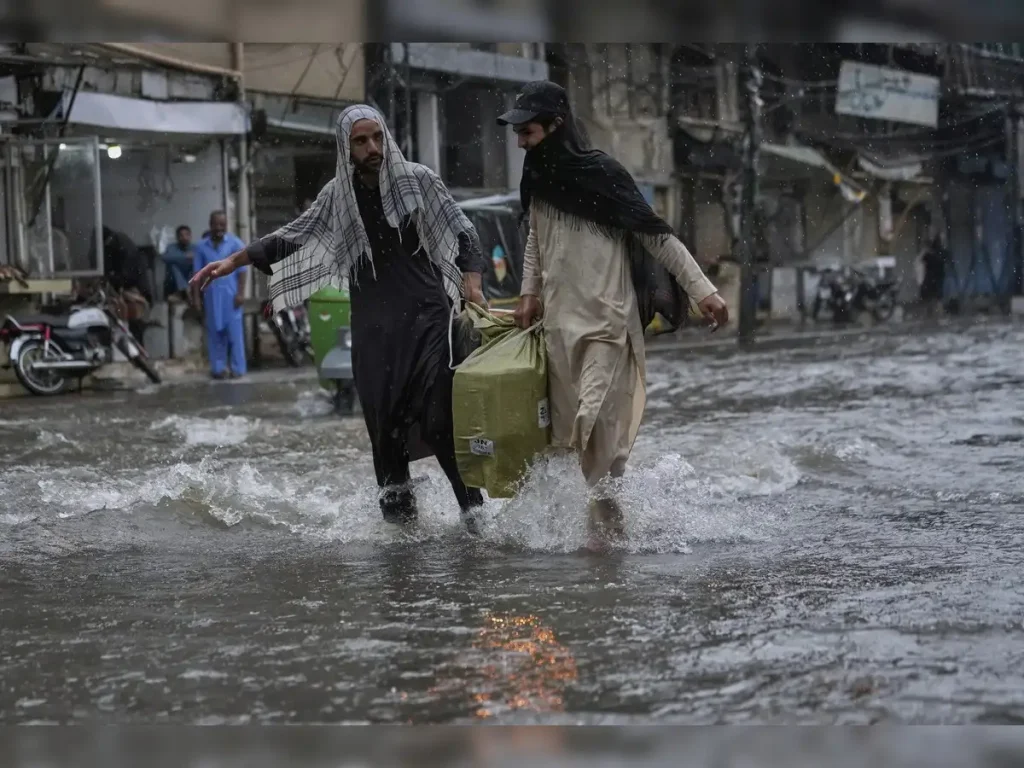Pakistan’s relentless monsoon season continues to wreak havoc, with another 20 people losing their lives in a single day as heavy downpours lashed multiple regions. The death toll for this year’s monsoon has now climbed past 700 fatalities, making 2025 one of the deadliest rainy seasons in recent history.
Daily Life in Chaos
The latest casualties were reported from Sindh, Punjab, and Khyber Pakhtunkhwa (KP). Victims included children and elderly individuals who died in incidents of roof collapses, electrocution, and flash floods. Rural areas remain especially vulnerable, where poorly built homes cannot withstand prolonged rains.
Major cities such as Karachi and Lahore were brought to a near standstill. Roads were submerged, vehicles broke down mid-street, and commuters struggled to reach work or school. In some low-lying neighborhoods, water entered homes, destroying furniture and leaving families homeless overnight.
Crops and Livelihoods Destroyed
Beyond human casualties, the monsoon has inflicted severe economic damage. Thousands of acres of standing crops—rice, cotton, and sugarcane—have been submerged. Livestock losses have been reported across Punjab and Sindh, further straining rural households that depend on farming for survival.
Agriculture contributes nearly 23% to Pakistan’s GDP, and experts fear the cumulative damage from this year’s floods could trigger food shortages and inflation in the coming months.
Rescue and Relief Efforts
The National Disaster Management Authority (NDMA) has deployed rescue teams to the worst-hit areas. Boats and helicopters are being used to evacuate families from flooded villages, while temporary shelters have been set up in government schools.
However, aid workers warn that relief efforts remain insufficient. With thousands displaced, many are without clean drinking water, food, or medical aid. NGOs have appealed for donations, and international organizations are assessing the scale of damage for possible humanitarian assistance.
A Recurring Nightmare
Monsoon devastation has become an annual tragedy in Pakistan. In 2022, catastrophic floods displaced 33 million people, and yet, three years later, many of the same issues persist: poor drainage, unplanned urbanization, and lack of flood defense infrastructure.
Climate experts say Pakistan’s geography makes it prone to heavy rains, but climate change has amplified the intensity. Warmer air holds more moisture, causing heavier downpours, while melting glaciers in the north increase river levels. Without adaptation policies, the cycle of destruction will only worsen.
Government Response and Public Frustration
Prime Minister Shehbaz Sharif expressed grief over the latest deaths, urging provincial governments to accelerate relief operations. Yet citizens remain frustrated, arguing that authorities respond only with temporary measures each year while ignoring long-term solutions.
Urban planners stress that Pakistan needs massive investments in stormwater drainage, river embankments, and early warning systems. Without these, even moderate rainfall events will continue to paralyze cities and devastate rural areas.
